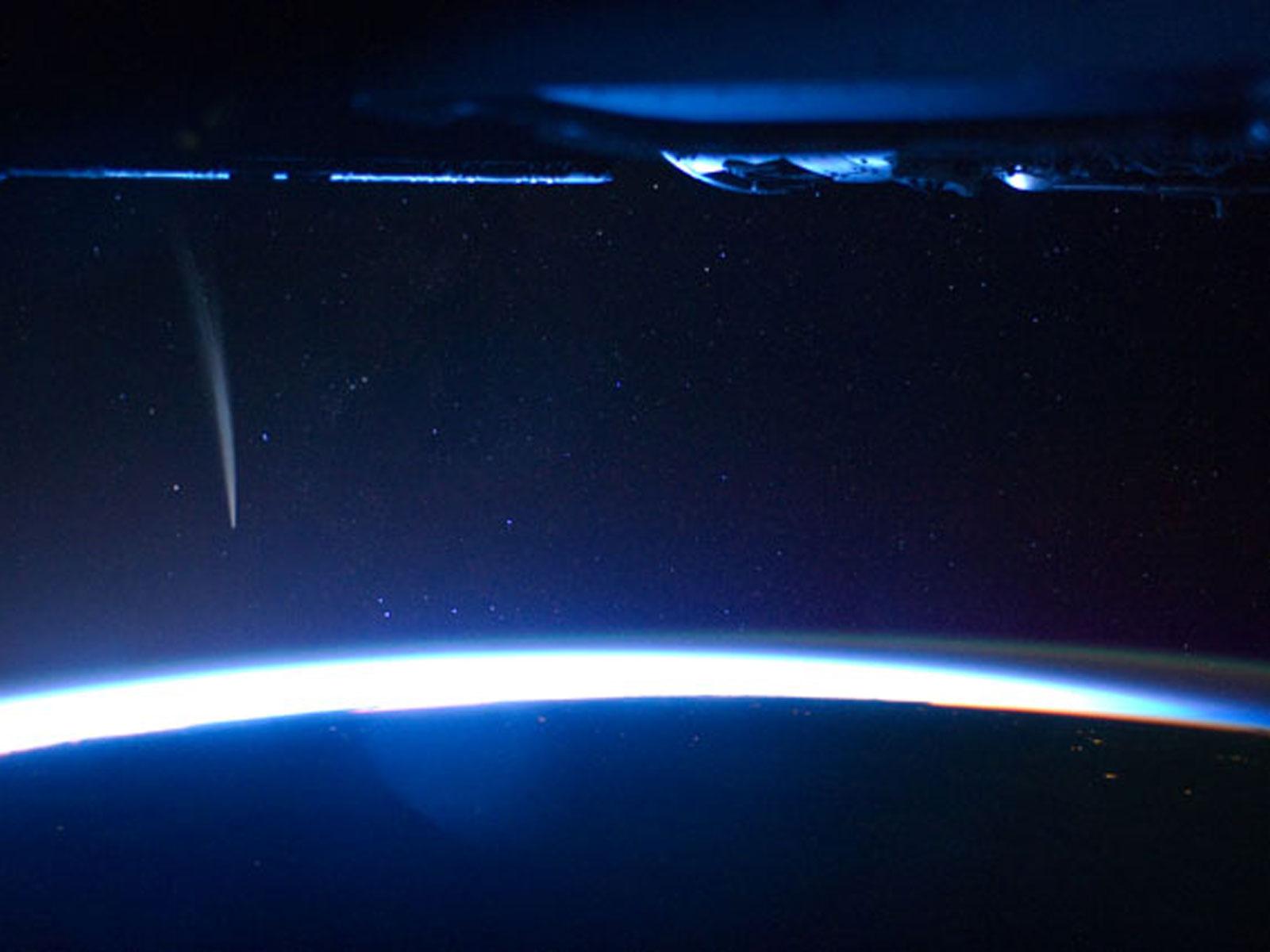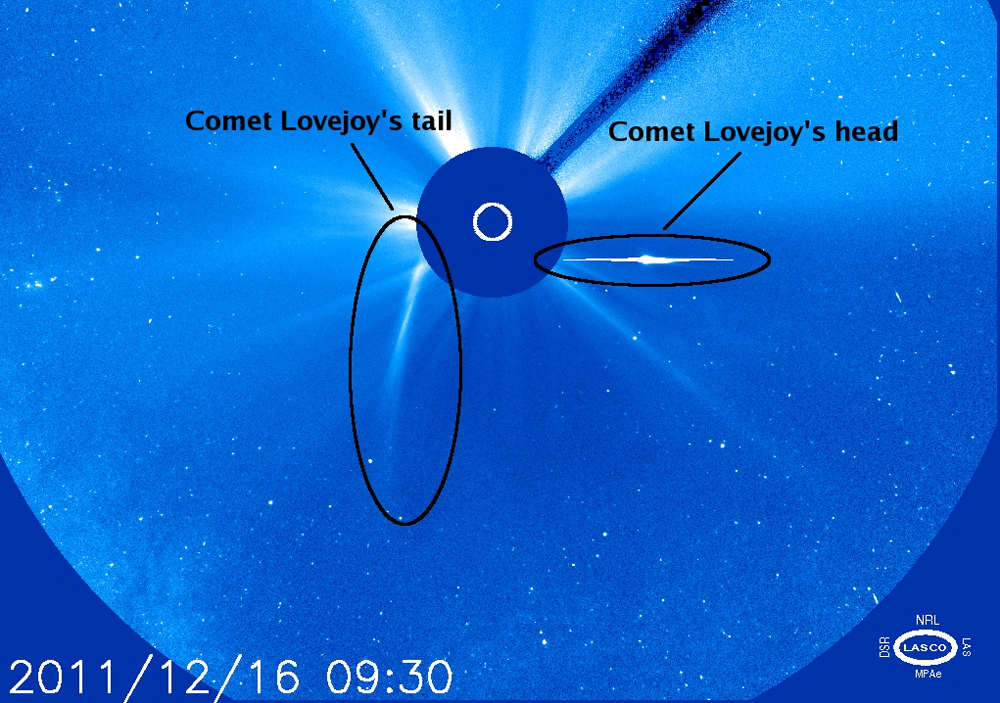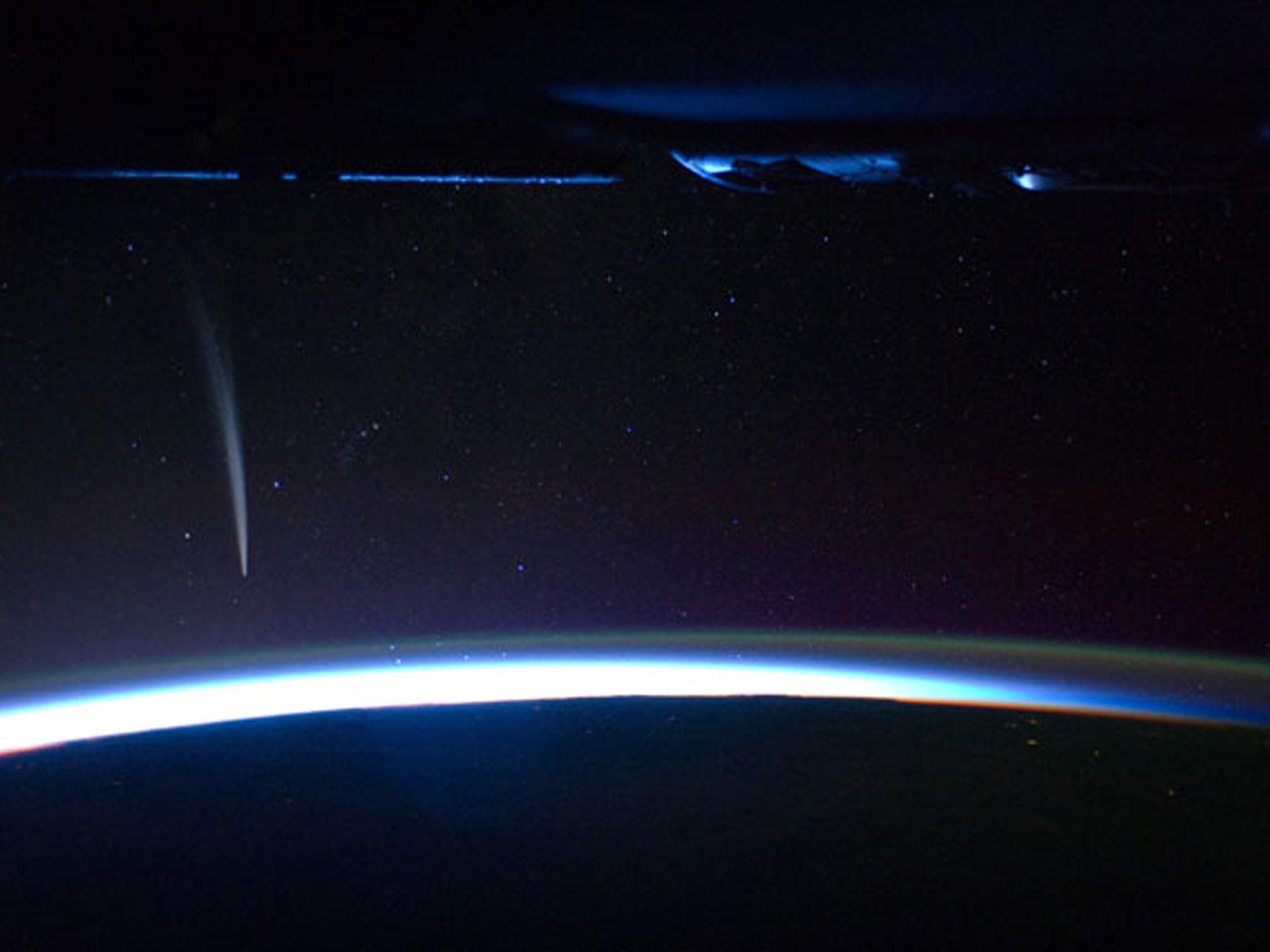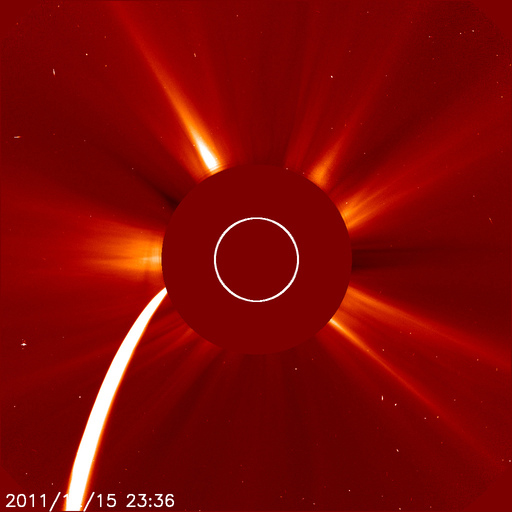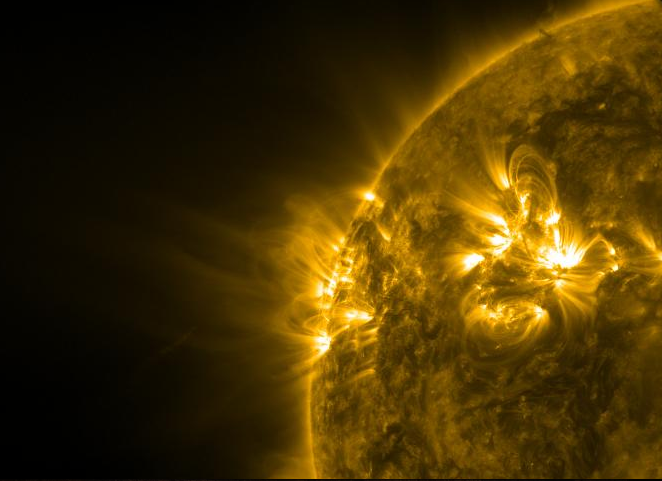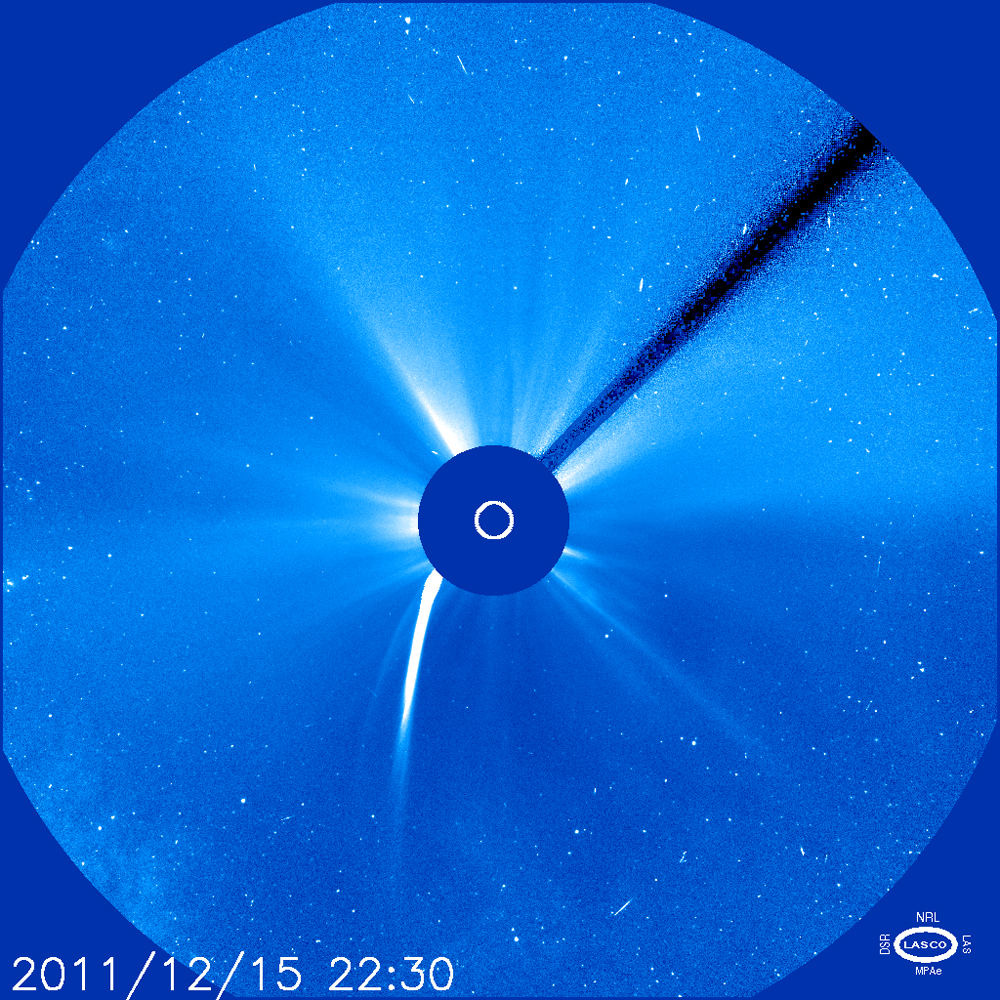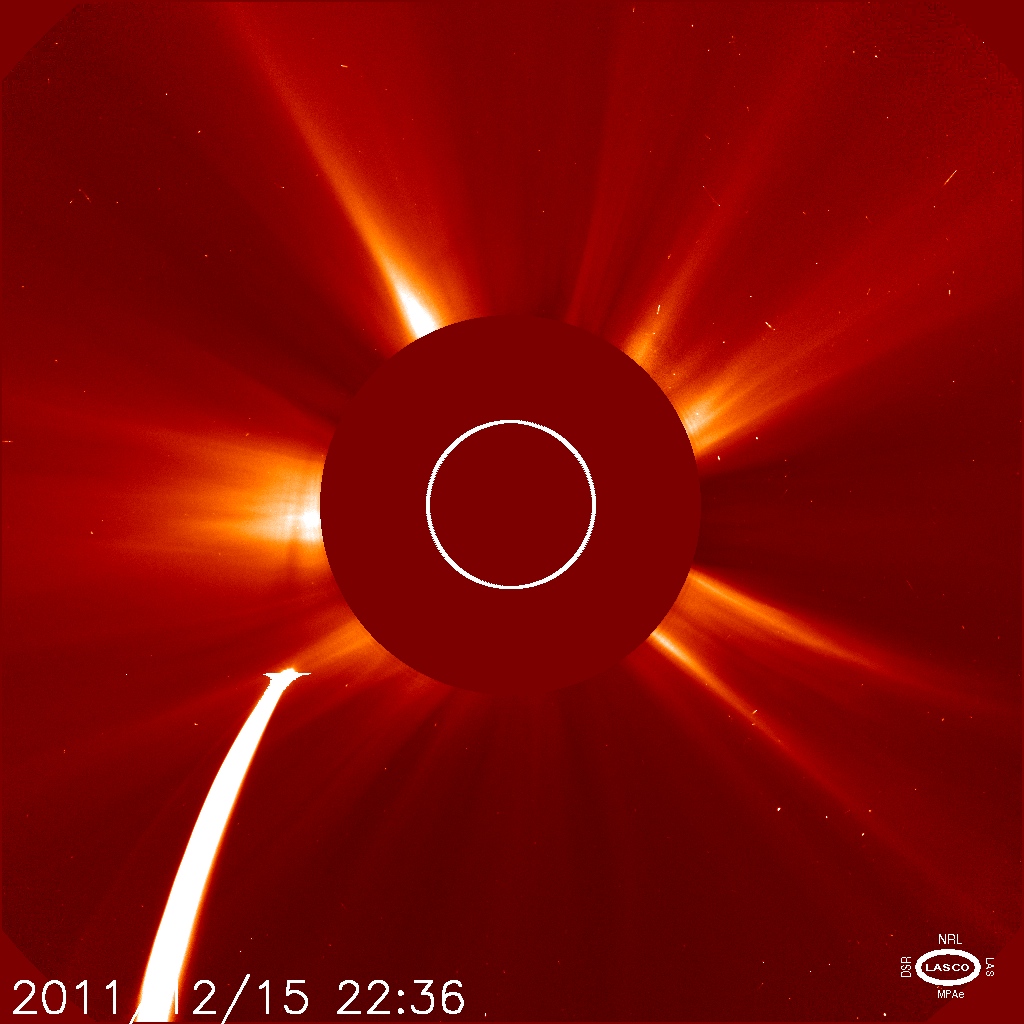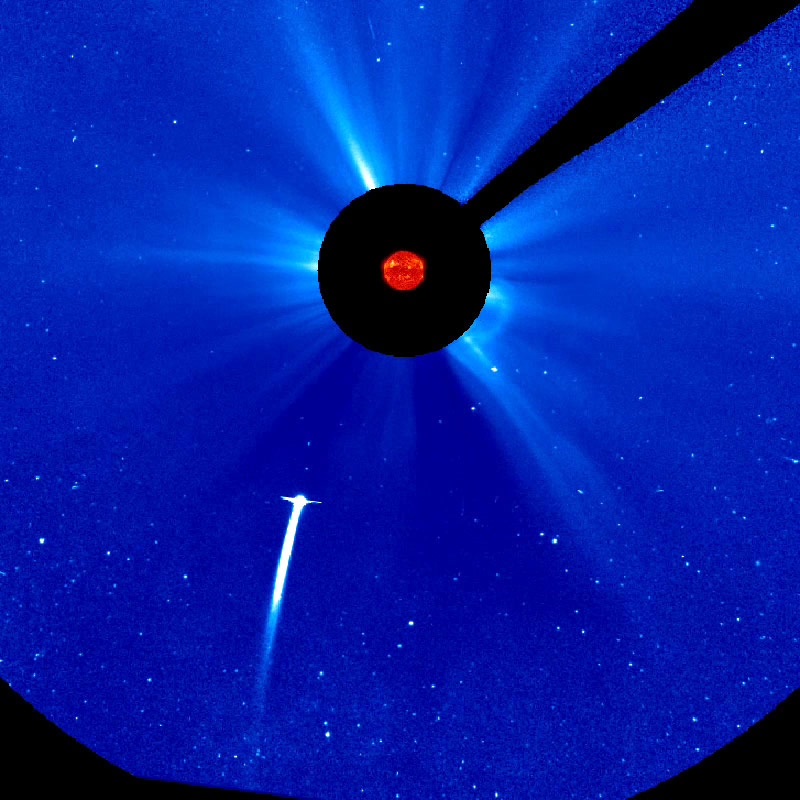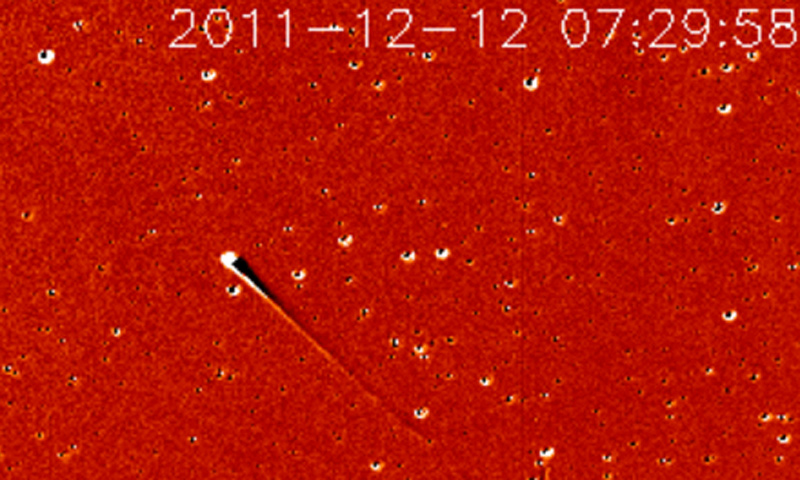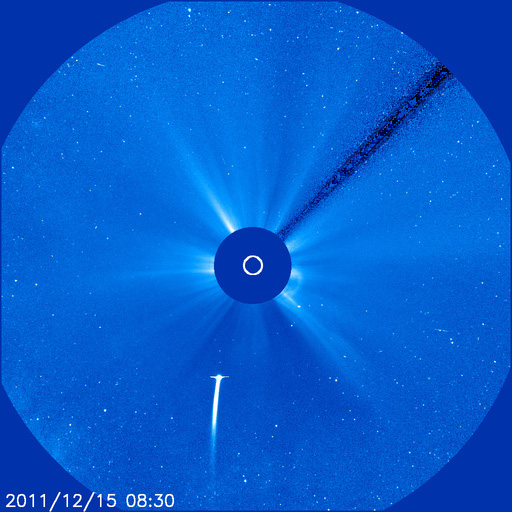Death-Defying Comet: Photos of Comet Lovejoy's Dive Through Sun
Comet Lovejoy from ISS
Comet Lovejoy is visible near Earth’s horizon in this nighttime image photographed by NASA astronaut Dan Burbank, Expedition 30 commander, onboard the International Space Station on Dec. 21, 2011.
Head and Tail of Comet Lovejoy After It Survived the Sun
Comet Lovejoy emerged from behind the sun, as seen by the tail and head marked in this SOHO image on Dec. 16, 2011.
Comet Lovejoy from ISS
Comet Lovejoy is visible near Earth’s horizon in this nighttime image photographed by NASA astronaut Dan Burbank, Expedition 30 commander, onboard the International Space Station on Dec. 21, 2011.
Comet Lovejoy Dives into the Sun as Seen by SOHO
Comet Lovejoy hurtled towards the sun on December 15, 2011, as seen by the SOHO spacecraft.
Comet Lovejoy's Tail Near the Sun
This image, taken by NASA's Solar Dynamics Observatory, shows Comet Lovejoy diving through the sun's atmosphere on Dec. 15, 2011. Lovejoy's tail is visible as a faint diagonal smudge to the left of the sun, toward the bottom of the image. The tail points from lower left to upper right.
Comet Lovejoy Image by NRL/SOHO/LASCO
omet Lovejoy in SOHO/LASCO C3
Comet Lovejoy Nears the Sun
This image, taken by the NASA/ESA SOHO spacecraft, shows Comet Lovejoy just 90 minutes or so before its closest approach to the sun on Dec. 15, 2011.
Breaking space news, the latest updates on rocket launches, skywatching events and more!
SDO and Comet Lovejoy, December 15, 2011
SoHo and STEREO spacecraft continue to watch Comet Lovejoy as it moves closer to the Sun and brightens. This still shows the comet headed towards the Sun, December 15, 2011.
Sungrazing Comet Lovejoy
Observations from NASA's Solar Terrestrial Relations Observatory (STEREO) spacecraft show the sungrazing comet Lovejoy as it approaches the sun in December 2011.
Comet Lovejoy in SOHO Satellite's Sights
Comet Lovejoy is the bright streak at the bottom of this image, taken by SOHO’s Large Angle Spectrometric Coronagraph (LASCO) C3 instrument. SOHO's LASCO instrument is a coronagraph. It blocks out the light from the Sun's disc, creating an artificial eclipse. With the central glare removed, fainter objects closer to the Sun can be seen clearly by the instrument at 0830 GMT Dec. 15, 2011

Space.com is the premier source of space exploration, innovation and astronomy news, chronicling (and celebrating) humanity's ongoing expansion across the final frontier. Originally founded in 1999, Space.com is, and always has been, the passion of writers and editors who are space fans and also trained journalists. Our current news team consists of Editor-in-Chief Tariq Malik; Editor Hanneke Weitering, Senior Space Writer Mike Wall; Senior Writer Meghan Bartels; Senior Writer Chelsea Gohd, Senior Writer Tereza Pultarova and Staff Writer Alexander Cox, focusing on e-commerce. Senior Producer Steve Spaleta oversees our space videos, with Diana Whitcroft as our Social Media Editor.
